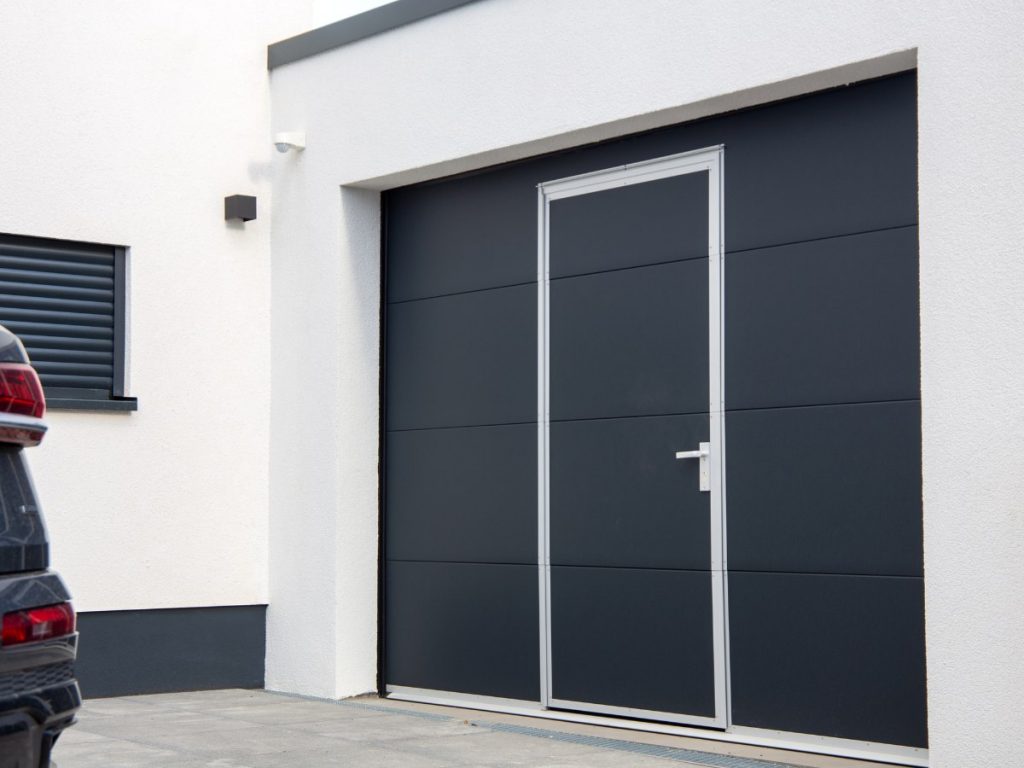Adjusting the height of your garage door is essential to maintaining its efficiency, security, and functionality. A properly adjusted garage door improves energy efficiency, ensures a proper seal to prevent unwanted wildlife, and provides sufficient clearance for vehicles and other large objects.
Whether you’re a DIY enthusiast looking to tackle this task yourself or prefer to have a professional handle it, this blog will equip you with the knowledge you need to adjust the height of your garage door effectively and efficiently. So, let’s dive in and learn how to master the art of adjusting garage door height with EM Garage.
Importance of Correct Garage Door Height
The correct height of your garage door is essential for various reasons. Firstly, it plays a critical role in energy efficiency. When the door is set at the proper height, it ensures a tight seal, preventing drafts and minimizing heat loss or gain.
Maintaining the correct height can improve energy efficiency, enhance security, and create a well-functioning garage that meets your needs. It’s an essential aspect of garage door maintenance that should not be overlooked.
Preparing Your Garage Door for Height Adjustment
Before you begin adjusting the height of your garage door’s height, taking a few preparatory steps is essential to ensure safety and efficiency. Following these steps can minimize the risk of injury and ensure that the adjustment process goes smoothly.
Taking these precautions will help create a safe working environment and ensure that the height adjustment of your garage door is done correctly. Safety should always be a top priority when working with any mechanical system, and garage doors are no exception.
Identifying the Type of Garage Door System
Before you start adjusting the height of your garage door, it’s essential to identify the type of garage door system you have. Different systems may have slightly different adjustment procedures, so understanding your specific system will ensure you follow the correct steps.
To identify your garage door system type, refer to the manual or check the manufacturer’s website for specific instructions. This will ensure that you have the necessary information to adjust the height of your garage door accurately and efficiently.
Step-by-Step Guide to Adjusting Garage Door Height
Adjusting the height of your garage door is straightforward and can be accomplished in a few simple steps. Follow this step-by-step guide to adjust the height of your garage door to the desired level.
Step 1: Set up your step ladder beneath the garage door opener, ensuring it is level and stable.
Step 2: Locate the limit adjustment screws on the side of the opener, usually marked “Up” and “Down” or “Open” and “Close.”
Step 3: If you want to increase the door’s opening height, turn the “Up” or “Open” screw in a clockwise direction by a quarter of a turn.
Step 4: Test the opener to see if the door height is now at the desired level. Repeat step 3 if necessary.
Step 5: If the door is not closing completely, turn the “Down” or “Close” screw counterclockwise by a quarter of a turn. Test the door’s closing height and adjust as needed.
By following these steps, you can easily adjust the height of your garage door to meet your specific needs and preferences.
Adjusting the Cable and Drum
In addition to adjusting the limit screws, you may need to adjust the cable and drum to ensure that your garage door operates smoothly and at the desired height. Here’s how to do it:
- Locate the cable drum: The cable drum is typically located on the torsion spring shaft near the top of the garage door.
- Determine the adjustment direction: To increase or decrease the cable tension, determine whether you need to turn the drum clockwise or counterclockwise.
- Use a winding bar: Insert a winding bar into one of the holes on the cable drum. Make sure the bar is securely fitted.
Setting the Correct Height and Testing
Once you’ve made the necessary adjustments to the limit screws, cable, and drum, it’s time to set the correct height for your garage door. Here are the steps to follow:
- Test the door’s operation: Before setting the final height, test the door to ensure it opens and closes smoothly without any issues.
- Adjust as needed: If the door doesn’t open or close properly, make further adjustments to the limit screws, cable, or drum until the desired level is achieved.
- Test again: After each adjustment, test the door’s operation to ensure it meets your desired level and operates smoothly.

Troubleshooting Common Issues During Adjustment
While adjusting the height of your garage door, you may encounter some common issues that require troubleshooting. Here are a few common issues and ways to address them:
- Door Won’t Stay Open/Closed: If your garage door doesn’t stay open or closed in the desired position, it may be due to improper adjustment of the limit screws. Check the screws and make necessary adjustments to ensure the door stays in place.
- Uneven Door Movement: If your garage door moves unevenly or appears unbalanced, it may be due to issues with the cables or springs. Inspect the cables and springs for any signs of damage or wear and seek professional assistance if needed.
Advanced Tips for Precision Adjustment
Once you have adjusted the height of your garage door to the desired level, some advanced tips can help you achieve even more precision and fine-tuning. These tips can be handy if you live in an area with extreme temperature changes or want to optimize your garage door’s performance. Here are some advanced tips for precision adjustment:
- Fine-Tuning the Balance: After adjusting the height, fine-tune the balance of your garage door by making minor adjustments to the torsion springs. This can be done by turning the adjustment screws in quarter-turn increments.
Maintenance Tips to Keep Your Garage Door at the Perfect Height
Regular maintenance is essential to keep your garage door at the perfect height and ensure optimal performance. Here are some maintenance tips to follow:
- Regular inspections: Inspect your garage door periodically for signs of wear, misalignment, or damage. Address any issues promptly to prevent further damage and ensure proper operation.
- Lubrication: Regularly lubricate the moving parts of your garage door, such as hinges, rollers, and springs. This will prevent friction and ensure smooth operation.
Regular Inspection and Lubrication
Regular inspection and lubrication are crucial for keeping your garage door in optimal condition. By performing these tasks regularly, you can identify potential issues and prevent them from escalating into major problems. Here’s what you need to do:
- Regular inspections: Inspect your garage door at least once every three months. Look for any signs of wear, damage, or misalignment. Check the cables, springs, rollers, and hinges for any issues.
- Lubrication: Apply a silicone-based lubricant to the moving parts of your garage door, such as the springs, hinges, rollers, and tracks. This will reduce friction and ensure smooth operation.
When to Call a Professional
While adjusting the height of your garage door is a task that most homeowners can do, there may be instances when it’s best to call a professional. Here are a few situations where professional help is recommended:
- Lack of experience or knowledge: If you’re unfamiliar with the mechanics of garage doors or need more knowledge and experience, it’s best to leave the adjustment to a professional. They have the expertise to handle the task safely and efficiently.
- Safety concerns: Garage doors can be heavy and dangerous if improperly handled. If you have concerns about your safety or the safety of others, it’s best to seek professional assistance.
- Warranty and terms of service: If your garage door is still under warranty or covered by a service agreement, adjusting the height yourself may void the warranty or violate the terms of service. It’s best to consult with the manufacturer or service provider before adjusting.
By calling a professional when necessary, you can ensure that your garage door’s height adjustment is done correctly and safely, giving you peace of mind and avoiding any potential risks.





